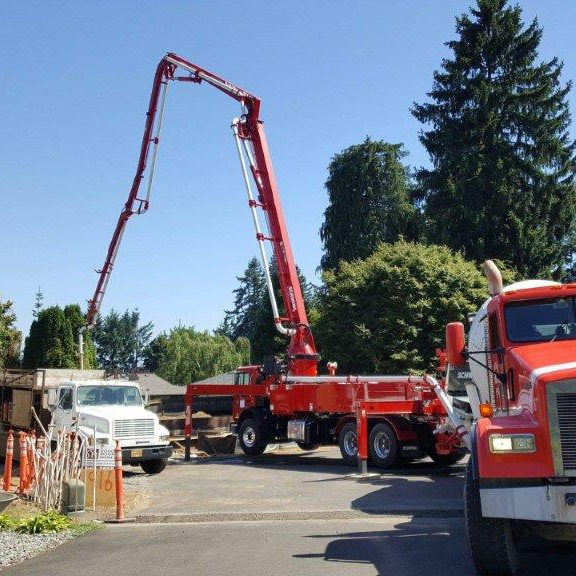Concrete, Sand and Gravel Tips and Tricks in Troutdale, ORegon
High temperatures can accelerate slump loss and can cause loss of entrained air. Temperature has a major effect on setting time of concrete which can cause it to set quicker. Here are a couple additives we recommend using to help slow the process.
Polyheed 997
This is a water reducing additive with features and benefits such as:
- Superior finishing characteristics for residential/commercial flatwork and formed surfaces
- Superior workability, pump ability and finish ability qualities even in concrete mixes containing low amounts of cementitious materials
- Compressive and flexural strength performance increased at all ages
- True mid-range water reduction (5-15%) and excellent performance across a wide concrete slump range, especially the difficult slump range of 5-8 in
- Significantly reduced placement and finishing time resulting in lower in-place concrete costs
- Improved concrete durability to damage from freezing and thawing
- Increase service life of concrete structures
MasterSet DELVO
This admixture retards setting time by controlling the hydration of Portland cement and other cementitious materials while facilitating placing and finishing operations. Features and benefits are:
- Reduced water content required for a given workability
- Retarded setting time characteristics
- Improved workability
- Provides flexibility in the scheduling of placing and finishing operations
- Offsets the effects of slump loss during extended delays between mixing and placing
- Reduces waste associated with concrete washwater and returned concrete
- Increase strength – compressive and flexural
- Within normal dosage range, it will generally extend the working and setting times of concrete containing normal Portland cement, fly ash, slag cement and silica fume approximately 1 hour to 5 hours compared to plain concrete mixture. This depends on job materials and temperatures.
- *Trial mixtures should be made under approx. job conditions to determine the dosage required.
PLACING AND CURING REQUIREMENTS FOR ALL PORTLAND CEMENT BASE PRODUCTS IN COLD WEATHER
Founded in 1904, the American Concrete Institute (ASI), is a leading authority and resource worldwide for the development and distribution of consensus-based standards, technical resources, educational programs, and proven expertise for individuals and organizations involved in concrete design, construction and materials, who share a commitment to pursuing the best use of concrete.
- ACI defines COLD WEATHER as “3 days of 40-degrees Fahrenheit or lower outside temperature”.
- ACI Table 3.1 – requires that all Portland cement-based concrete products be produced during “Cold Weather”: at a minimum temperature of not less than 55-degrees F.
- Concrete that will be exposed to little or no freezing and thawing in service or during construction, such as foundations and substructures, be maintained at a minimum temperature of not less than 55-degrees F for 2 days minimum.
- Concrete that will be exposed to weather in service or during construction be maintained at a temperature of not less than 55-degrees F for 3 days minimum.
This information supplied by:
Allan Kramer, BSIE, ASTM, ACE, CSI, ASCE
Technical Services Manager for Lehigh Northwest Cement Co.







